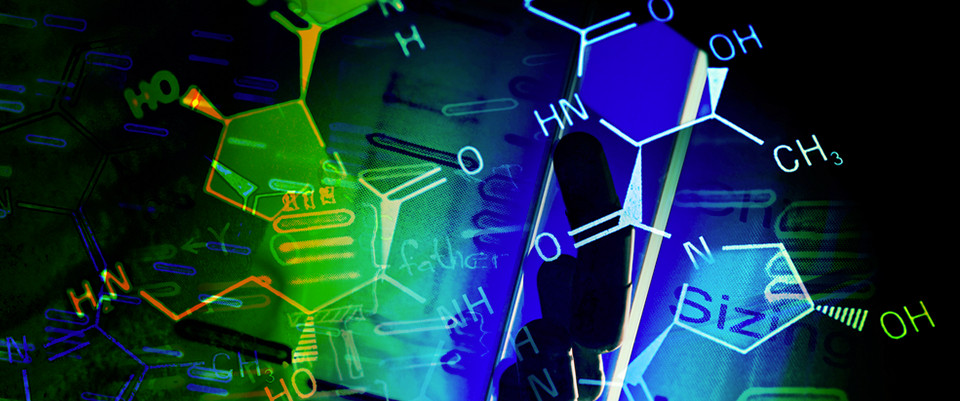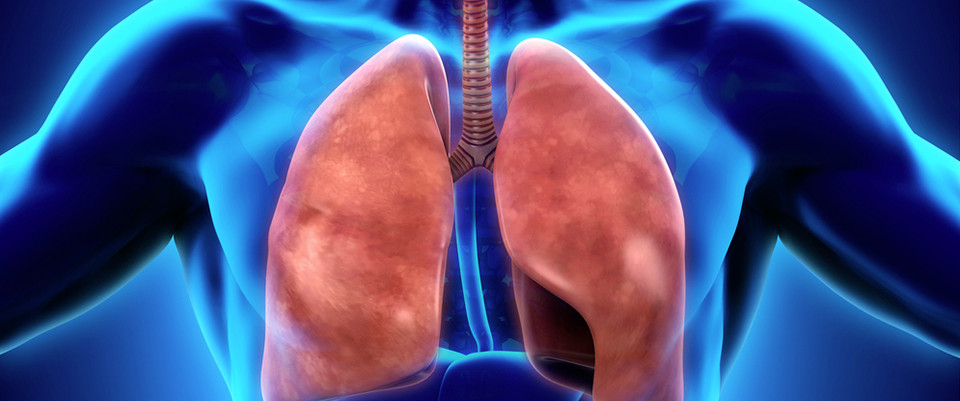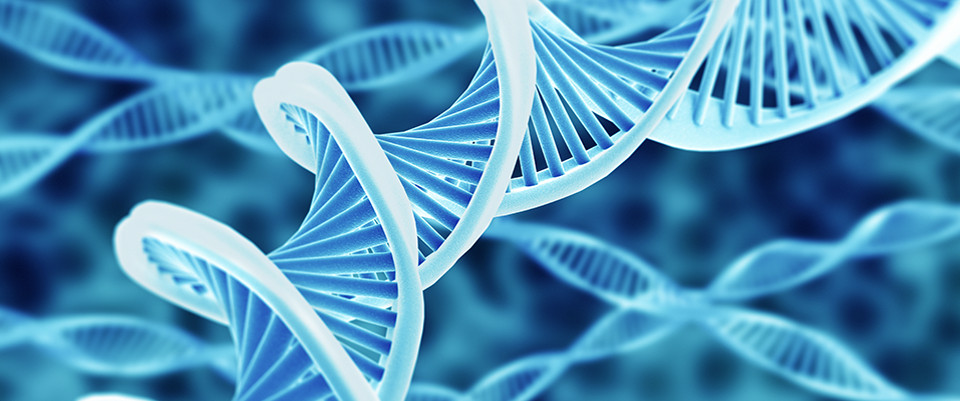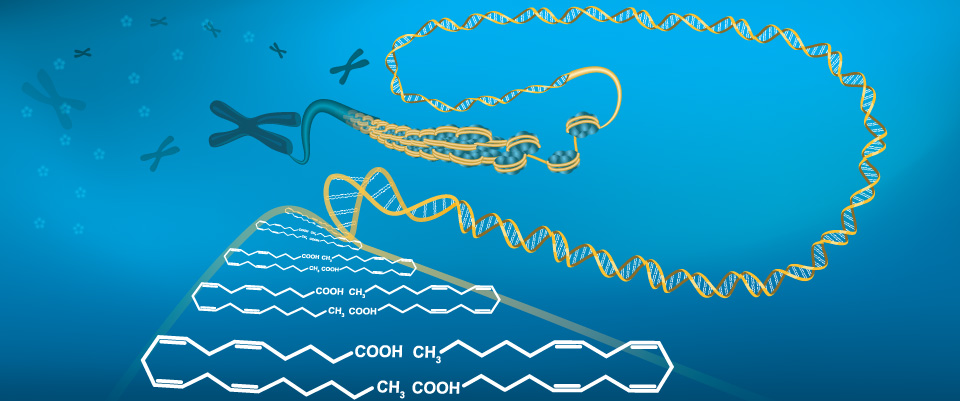PubMed
Discovery of novel ascorbic acid derivatives and other metabolites in fruit of Rosa roxburghii Tratt through untargeted metabolomics and feature-based molecular networking
Food Chem. 2022 Nov 2;405(Pt A):134807. doi: 10.1016/j.foodchem.2022.134807. Online ahead of print.ABSTRACTFruit of Rosa roxburghii Tratt (FRR) is widely used in functional food industry while short of metabolites research. Herein, we firstly identified 251 metabolites in FRR based on untargeted liquid chromatography-mass spectrometry (LC-MS) approach. Then, 42 differential compounds were sought out to avoid the confusing use of FRR and fruit of R. sterilis S. D. Shi (FRS), and FRR was evaluated exhibiting higher biofunction potential. Moreover, a quantitative LC-MS approach was established to determine the contents of 3 ascorbyl hexosides, and FRR with higher contents should be better source than FRS. Additionally, 17 ascorbic acid (AA) derivatives formed by conjugation of ascorbyl unit with organic acids, flavonoids, or glucuronic acid were also discovered in FRR through characteristic ions of AA and feature-based molecular networking (FBMN), enlightening that AA derivatives were not limited to ascorbyl glycosides. This study provided abundant metabolites information of FRR, laying the basis for exploitation of FRR.PMID:36370576 | DOI:10.1016/j.foodchem.2022.134807
The growth and metabolome of Saccharomyces uvarum in wine fermentations is strongly influenced by the route of nitrogen assimilation
J Ind Microbiol Biotechnol. 2022 Nov 12:kuac025. doi: 10.1093/jimb/kuac025. Online ahead of print.ABSTRACTNitrogen is a critical nutrient in beverage fermentations, influencing fermentation performance and formation of compounds that affect organoleptic properties of the product. Traditionally, most commercial wine fermentations rely on Saccharomyces cerevisiae but the potential of alternative yeasts is increasingly recognised because of the possibility to deliver innovative products and process improvements. In this regard, Saccharomyces uvarum is an attractive non-traditional yeast that, while quite closely related to S. cerevisiae, displays a different fermentative and aromatic profile. Although S. uvarum is used in cider-making and in some winemaking, better knowledge of its physiology and metabolism is required if its full potential is to be realised. To address this gap, we performed a comparative analysis of the response of S. uvarum and S. cerevisiae to 13 different sources of nitrogen, assessing key parameters such as growth, fermentation performance, the production of central carbon metabolites and aroma volatile compounds. We observed that the two species differ in the production of acetate, succinate, medium-chain fatty acids, phenylethanol, phenylethyl acetate and fusel/branched acids in ways that reflect different distribution of fluxes in the metabolic network. The integrated analysis revealed different patterns of yeast performance and activity linked to whether growth was on amino acids metabolised via the Ehrlich pathway or on amino acids and compounds assimilated through the central nitrogen core. This study highlights differences between the two yeasts and the importance that nitrogen metabolism can play in modulating the sensory profile of wine when using S. uvarum as the fermentative yeast.PMID:36370452 | DOI:10.1093/jimb/kuac025
Stable Isotope Labeling by Amino Acids and Bioorthogonal Noncanonical Amino Acid Tagging in Cultured Primary Neurons
Methods Mol Biol. 2023;2603:163-171. doi: 10.1007/978-1-0716-2863-8_13.ABSTRACTCultured primary neurons are a well-established model for the study of neuronal function. Conventional stable isotope labeling with amino acids in cell culture (SILAC) requires nearly complete metabolic labeling of proteins and therefore is difficult to apply to cultured primary neurons, which do not divide in culture. In a multiplex SILAC strategy, two different sets of heavy amino acids are used for labeling cells for the different experimental conditions. This allows for straightforward SILAC quantitation using partially labeled cells because the two cell populations are always equally labeled. When combined with bioorthogonal noncanonical amino acid tagging (BONCAT), it allows for comparative proteomic analysis of de novo protein synthesis. Here we describe protocols that utilize the multiplex SILAC labeling strategy for primary cultured neurons to study steady-state and nascent proteomes.PMID:36370278 | DOI:10.1007/978-1-0716-2863-8_13
Effect of ethanolamine utilization on the pathogenicity and metabolic profile of enterotoxigenic Escherichia coli
Appl Microbiol Biotechnol. 2022 Nov 12. doi: 10.1007/s00253-022-12261-x. Online ahead of print.ABSTRACTBacterial pathogenicity is greatly affected by nutrient recognition and utilization in the host microenvironment. The characterization of enteral nutrients that promote intestinal pathogen virulence is helpful for developing new adjuvant therapies and inhibiting host damage. Ethanolamine (EA), as a major component of intestinal epithelial cells and bacterial membranes, is abundant in the intestine. Here, we provide the first demonstration that the critical human and porcine pathogen enterotoxigenic Escherichia coli (ETEC) can utilize EA as a nitrogen source, which affects its virulence phenotype. We found that compared with that in M9 medium (containing NH4Cl), EA inhibited ETEC growth to a certain extent; however, the relative expression levels of virulence-related genes, such as ltA (3.0-fold), fimH (2.9-fold), CfaD (2.6-fold), gspD (3.6-fold), and qesE (1.3-fold), increased significantly with 15 mM EA as a nitrogen source (P < 0.05), and the adhesion efficiency of ETEC to Caco-2 cells increased approximately 4.2-fold. In Caco-2 cells, the relative cell viability decreased from 74.8 to 63.4%, and the transepithelial electrical resistance (TEER) cells decreased to 74.8% with intestinal EA (4 mM). In addition, the relative expression levels of proinflammatory factors, such as TNF-α (3.2-fold), INF-γ (2.9-fold), and IL-1β (1.98-fold), in ETEC-infected Caco-2 cells were significantly upregulated (P < 0.05) under EA exposure; however, the above virulence changes were not found in ΔeutR and ΔeutB ETEC. A gas chromatography-mass spectrometry (GC-MS)-based untargeted metabolomics approach was then employed to reveal EA-induced metabolic reprogramming related to ETEC virulence. The data showed that most metabolites related to carbohydrate, aspartate and glutamate metabolism, shikimic acid metabolism, and serine metabolism in ETEC exhibited a decreasing trend with increases in the EA concentration from 0 to 15 mM, but the branched-chain amino acid (BCAA) levels in ETEC increased in a dose-dependent manner under EA exposure. Our data suggest that the intestinal EA concentration can significantly affect the virulence phenotype, metabolic profile, and pathogenicity of ETEC. KEY POINTS: • ETEC growth and virulence gene expression could be regulated by ethanolamine. • The intestinal concentration of EA promoted the damaging effect of ETEC on the host epithelial barrier. • The promoting effect of EA on ETEC toxicity may be related to BCAA metabolism.PMID:36370159 | DOI:10.1007/s00253-022-12261-x
Prediction of Busulfan Clearance by Predose Plasma Metabolomic Profiling
Clin Pharmacol Ther. 2022 Nov 12. doi: 10.1002/cpt.2794. Online ahead of print.ABSTRACTIntravenous (IV) busulfan doses are often personalized to a target plasma exposure (targeted busulfan) using an individual's busulfan clearance (BuCL). We evaluated whether BuCL could be predicted by a predose plasma panel of 841 endogenous metabolomic compounds (EMCs). In this prospective cohort of 132 hematopoietic cell transplant (HCT) patients, all had samples collected immediately before to busulfan administration (preBU) and 96 had samples collected two weeks before busulfan (2-week-preBU). BuCL was significantly associated with 37 EMCs after univariate linear regression analysis and controlling for false discovery (<0.05) in the 132 preBU samples. In parallel, with preBU samples, we included all 841 EMCs in a Lasso penalized regression which selected 13 EMCs as predominantly associated with BuCL. Then, we constructed a prediction model by estimating coefficients for these 13 EMCs, along with sex, using ordinary least-squares. When the resulting linear prediction model was applied to the 2-week-preBU samples, it explained 40% of the variation in BuCL (adjusted R2 =0.40). Pathway enrichment analysis revealed 18 pathways associated with BuCL. Lysine degradation followed by Steroid Biosynthesis, which aligned with the univariate analysis, were the top two pathways. BuCL can be predicted before busulfan administration with a linear regression model of 13 EMCs. This pharmacometabolomics method should be prioritized over use of a busulfan test dose or pharmacogenomics to guide busulfan dosing. These results highlight the potential of pharmacometabolomics as a precision medicine tool to improve or replace pharmacokinetics to personalize busulfan doses.PMID:36369996 | DOI:10.1002/cpt.2794
Potential prognostic markers of retained placenta in dairy cows identified by plasma metabolomics coupled with clinical laboratory indicators
Vet Q. 2022 Nov 12:1-18. doi: 10.1080/01652176.2022.2145619. Online ahead of print.ABSTRACTBACKGROUND: The complex etiopathology of retained placenta (RP) and hazards associated with it has made it crucial for researchers and clinical veterinarians to study pathogenesis, early-warning diagnosis, and treatment.OBJECTIVES: This study aimed to screen the potential prognostic markers of RP in dairy cows using plasma metabolomics coupled with clinical laboratory indicators.METHODS: Blood samples were collected from 260 dairy cows at 21, 14, 7, and 0 days before parturition and 7, 14, and 21 days after parturition. Consequently, 10 healthy cows and 10 cows with RP with similar parity, body condition score, and age were included in the study. The changes in clinical laboratory indicators of the enrolled cows from 21 before parturition to 21 days after parturition were assessed. After initial overview of the multivariate statistical data using PCA analysis, the data were subjected to orthogonal partial least-squares discriminant analysis.RESULTS: Compared with cows with RP at 7 days before parturition, the levels of endothelin and 6-keto-prostaglandin F1α were increased in healthy cows while the level of estradiol and progesterone decreased. Adenine dinucleotide phosphate, hypoxanthine, guanine dinucleotide phosphate, inosine monophosphate, and L-arginine were revealed as potential prognostic markers of cows with RP at 7 days before parturition involved in the regulation of taste transduction, purine and glutathione metabolism, and autophagy.CONCLUSIONS: The best period for the early-warning diagnosis of RP in dairy cows is 7 days before parturition, and purine metabolism and autophagy may play a vital role in the occurrence and development of RP in dairy cows.PMID:36369933 | DOI:10.1080/01652176.2022.2145619
Plasma metabolite profiles identify pediatric medulloblastoma and other brain cancer
Anal Bioanal Chem. 2022 Nov 12. doi: 10.1007/s00216-022-04427-3. Online ahead of print.ABSTRACTMedulloblastoma is a malignancy of the central nervous system that occurs most frequently in childhood and is often difficult to diagnose due to its similarities to conventional imaging findings for other pediatric intracranial tumors such as astrocytomas and ependymomas. The purpose of this study was to identify new metabolites and differential metabolic pathways by analyzing the significantly different metabolites present in the plasma of children with medulloblastoma in comparison with those with other intracranial tumors. Plasma was collected from 37 children with medulloblastoma and 34 children with other intracranial tumors. Targeted and non-targeted metabolomics based on ultra-performance liquid chromatography tandem mass spectrometry (UPLC-MS/MS) analyses were performed to determine metabolic changes in pediatric medulloblastomas versus other intracranial tumors. Based on multivariate statistical analysis and regression models, we identified differential metabolites in the plasma and investigated different metabolic pathways. A total of 61 differential metabolites in the plasma of children with medulloblastoma were identified by non-targeted metabolomics analysis. In addition, targeted metabolomics analysis identified four differential amino acids, thus allowing us to establish a diagnostic model for children with medulloblastoma. Metabolic pathway analysis showed that there were significant differences in patients with medulloblastoma in terms of glycerophospholipid and α-linolenic acid metabolism pathways as well as several amino acid metabolism pathways (phenylalanine, tyrosine, and tryptophan biosynthesis). We identified differential profiles of key plasma metabolites between children with medulloblastoma and other forms of intracranial tumor, thus providing a basis for identifying early diagnostic markers of medulloblastoma and new therapeutic targets and strategies.PMID:36369592 | DOI:10.1007/s00216-022-04427-3
Sensory and metabolite migration from tilapia skin to soup during the boiling process: fast and then slow
NPJ Sci Food. 2022 Nov 11;6(1):52. doi: 10.1038/s41538-022-00168-w.ABSTRACTThis study mainly studied sensory and metabolite migration from the skin to the soup in the boiling process of tilapia skin using content analysis, electronic nose technique, electronic tongue technique, and metabolomics technique based on ultra-high performance liquid chromatography-mass spectrometry/mass spectrometry and gas chromatography-time-of-flight-mass spectrometry. The content changes, flavor changes, taste changes, metabolite numbers and differential metabolite numbers for both tilapia skin and soup mainly occurred in the initial 30 min. Moreover, the initial 10 min was the key period for the metabolite changes in the boiling process. Further, the differential metabolites in these three periods (0-10, 10-30, and 30-60 min) were identified to show the metabolites migration process. Six (adenine, gingerol, terephthalic acid, vanillin, pentanenitrile, and 2-pyrrolidinonede) and seven (butyramide, lysope(0:0/20:4(5z,8z,11z,14z)), lysope(22:6(4z,7z,10z,13z,16z,19z)/0:0), linoleic acid, N-acetylneuraminic acid, L-threose, and benzoin) chemicals were screened out in the differential metabolites of tilapia skin and soup, respectively, with Variable Importance in the Projection of >1 and p value of <0.05. This work would be beneficial to understand the sensory and metabolite migration in the preparation process of fish soup and provided a metabolomic analysis route to analyze metabolites migration in food.PMID:36369181 | DOI:10.1038/s41538-022-00168-w
Glycolytic flux control by drugging phosphoglycolate phosphatase
Nat Commun. 2022 Nov 11;13(1):6845. doi: 10.1038/s41467-022-34228-2.ABSTRACTTargeting the intrinsic metabolism of immune or tumor cells is a therapeutic strategy in autoimmunity, chronic inflammation or cancer. Metabolite repair enzymes may represent an alternative target class for selective metabolic inhibition, but pharmacological tools to test this concept are needed. Here, we demonstrate that phosphoglycolate phosphatase (PGP), a prototypical metabolite repair enzyme in glycolysis, is a pharmacologically actionable target. Using a combination of small molecule screening, protein crystallography, molecular dynamics simulations and NMR metabolomics, we discover and analyze a compound (CP1) that inhibits PGP with high selectivity and submicromolar potency. CP1 locks the phosphatase in a catalytically inactive conformation, dampens glycolytic flux, and phenocopies effects of cellular PGP-deficiency. This study provides key insights into effective and precise PGP targeting, at the same time validating an allosteric approach to control glycolysis that could advance discoveries of innovative therapeutic candidates.PMID:36369173 | DOI:10.1038/s41467-022-34228-2
An automated online three-phase electro-extraction setup with machine-vision process monitoring hyphenated to LC-MS analysis
Anal Chim Acta. 2022 Dec 1;1235:340521. doi: 10.1016/j.aca.2022.340521. Epub 2022 Oct 21.ABSTRACTSample preparation is a labor-intensive and time-consuming procedure, especially for the bioanalysis of small-volume samples with low-abundant analytes. To minimize losses and dilution, sample preparation should ideally be hyphenated to downstream on-line analysis such as liquid chromatography-mass spectrometry (LC-MS). In this study, an automated three-phase electro-extraction (EE) method coupled to machine vision was developed, integrated with a robotic autosampler hyphenated to LC-MS. Eight model compounds, i.e. amitriptyline, clemastine, clomipramine, haloperidol, loperamide, propranolol, oxeladin, and verapamil were utilized for the optimization and evaluation of the automated EE setup. The stability of automated EE was evaluated by monitoring the acceptor droplet size by machine vision and recording the current during EE. A Design of Experiment approach (Box-Behnken design) was utilized to optimize the critical parameters of the EE method, i.e., the ratio of formic acid in the sample to acceptor phase, extraction voltage, and extraction time. The developed quadratic models showed good fitness (p < 0.001, R2 > 0.95). Automated EE could be achieved in less than 2 min with enrichment factors (EF) up to 387 and extraction recoveries (ER) up to 97% for academic samples. Finally, the optimized EE method was successfully applied to both spiked human urine and plasma samples with low-concentration (50 ng mL-1) analytes and a low starting sample volume of 20 μL of plasma and urine in 10-fold diluted samples. The developed automated EE setup is easy to operate, provides a fast extraction method for analytes from volume-limited biological samples, and is hyphenated with on-line LC-MS analysis. Therefore, this method can provide fast and automated sample preparation to solve bottlenecks in high-throughput bioanalysis workflows.PMID:36368820 | DOI:10.1016/j.aca.2022.340521
Hepatocyte-specific Mas activation enhances lipophagy and fatty acid oxidation to protect against acetaminophen-induced hepatotoxicity in mice
J Hepatol. 2022 Nov 9:S0168-8278(22)03285-8. doi: 10.1016/j.jhep.2022.10.028. Online ahead of print.ABSTRACTBACKGROUND & AIMS: Acetaminophen (APAP) is the most common cause of drug-induced liver injury (DILI); however, treatment options are limited. Mas is a G protein-coupled receptor whose role in APAP-induced hepatotoxicity has not yet been examined.METHODS: Intrahepatic Mas expression was determined in both human and mouse DILI models. Mas1-/-, AlbcreMas1f/f, Ppara-/-, Mas1-/-Ppara-/- and wild-type mice were challenged with APAP for the in vivo analyses of Mas-AKT-FOXO1 axis-dependent lipophagy and fatty acid oxidation (FAO), using pharmacological compounds and genetic tools. Liver samples were collected for RNA-sequencing, proteomics, metabolomics, lipidomics, and metabolic flux analysis. Live-imaging of liver and histological, biochemical, and molecular studies were performed to evaluate APAP-induced hepatotoxicity in mice. Primary hepatocytes and hepatic cell lines were exposed to APAP for in vitro analysis.RESULTS: Intrahepatic Mas expression was significantly upregulated in human and mouse DILI models. Mice with systemic, liver-specific, or hepatocyte-specific Mas1 deficiency were vulnerable to APAP-induced hepatotoxicity. They exhibited substantially impaired lipophagy and downstream FAO, which was accompanied by the activation of AKT and suppression of FOXO1. In addition, the prophylactic activation of Mas showed unbelievably ideal effects to protect mice from APAP challenge, with remarkably enhanced lipophagy and FAO dependent on the AKT-FOXO1 axis. Moreover, the protective effects of AVE0991 were substantially diminished by the inhibition of either lipophagy or FAO.CONCLUSIONS: The activation of Mas on hepatocytes enhanced AKT-FOXO1-dependent lipophagy and downstream FAO to protect mice from APAP-induced hepatotoxicity, suggesting that hepatocyte-specific Mas might be a novel therapeutic target for DILI.IMPACT AND IMPLICATIONS: Mas signaling arises as a novel therapeutic target for patients with APAP overdose. Mas-AKT/FOXO1-fatty acid degradation pathway is critical for researchers to develop treatment strategies of APAP overdose. When Mas signaling is targeted, the extent of liver injury should be taken into account at the time of administration. These findings obtained from APAP-challenged mice still need to be confirmed in the clinics.PMID:36368597 | DOI:10.1016/j.jhep.2022.10.028
Hepatic PGC-1α has minor regulatory effect on the transcriptome and metabolome during high fat high fructose diet and exercise
Gene. 2022 Nov 8:147039. doi: 10.1016/j.gene.2022.147039. Online ahead of print.ABSTRACTThe prevalence of non-alcoholic fatty liver diseases (NAFLD) has reached epidemic levels during recent years and a major driver of NAFLD are diets high in fat and fructose. A common practice in the treatment of NAFLD are life-style interventions including for example increased physical activity. The transcriptional coactivator peroxisome proliferator-activated receptor gamma coactivator 1α (PGC-1α) has been shown to be central in mediating the beneficial effects of exercise training by regulating the expression of key metabolic genes. However, the significance of hepatic PGC-1α for the high fat high fructose (HFFD) induced condition of NAFLD has not been elucidated. Therefore the aim of the present study was to investigate the effect of hepatic PGC-1α on HFFD and exercise-induced changes in the hepatic transcriptome and metabolome in mice. Using gene-arrays and 1H NMR spectroscopy, the liver transcriptome and metabolome of liver-specific PGC-1α knock-out mice receiving either standard chow, HFFD or HFFD + exercise (HFFD+Ex) were determined. In total 122 genes were identified as differently expressed in mice receiving HFFD for 13 weeks compared to chow, while the loss of hepatic PGC-1α only had very minor effects on the transcriptome. The same was observed for the liver metabolome. The effect of 4 weeks exercise training in combination with 13 weeks of HFFD, had small effects on the transcriptome compared to HFFD alone, while more effects were observed for the metabolome. Together our results highlights a minor regulatory effect of hepatic PGC-1α on the liver transcriptome during high fat high fructose diet and exercise training.PMID:36368573 | DOI:10.1016/j.gene.2022.147039
Integrating metabolomics and network pharmacology to investigate Panax japonicus prevents kidney injury in HFD/STZ-induced diabetic mice
J Ethnopharmacol. 2022 Nov 8:115893. doi: 10.1016/j.jep.2022.115893. Online ahead of print.ABSTRACTETHNOPHARMACOLOGICAL RELEVANCE: Panax japonicus C. A. Meye (PJ) has unique effects on diseases by "qi" stagnation and blood stasis in ancient. Modern studies have shown that PJ can treat diabetic kidney disease (DKD) caused by deficiency and blood stasis.AIM OF THE STUDY: This study evaluated the potential effects of PJ on DKD, a microvascular complication, and investigated its possible mechanisms.MATERIALS AND METHODS: In this study, the chemical constituents of PJ were analyzed by HPLC. In vivo studies, we constructed a diabetic mice model by HDF combined with STZ, then administered PJ to diabetic mice for 6 weeks. Blood lipid, BUN, 24h urine protein, and renal tissue HE staining were detected to comprehensively evaluate the protective effect of PJ on DKD. Metabolomics investigated the metabolic pathways influenced by PJ in the treatment of DKD. Moreover, the potential targets and signal pathways were investigated using network pharmacology. Finally, molecular docking predicts affinity of active compounds and core targets, and western blotting was used to detect core target expression levels.RESULTS: In vivo study, PJ can reduce hyperlipidemia, serum BUN, and 24-hour urinary protein in diabetic mice, and protect the pathological changes in renal tissue. Metabolomics results showed that PJ had significant regulatory effect on unsaturated fatty acids, glycerophospholipid metabolism, and purine metabolism. Network pharmacology showed that MAPK1, MAPK8, Bcl-2, and Caspase 3 were the core targets in PJ against DKD. Molecular docking revealed that Bcl-2 and Caspase 3 have a strong affinity for Chikusetsusaponin Iva, Ginsenoside Rb1, and Ginsenoside Rg1. Moreover, when compared to the model group, the PJ group had higher levels of anti-apoptosis protein Bcl-2 and lower levels of pro-apoptosis protein Caspase 3.CONCLUSION: PJ can reduce blood lipids, regulate the biosynthesis of unsaturated fatty acids and purine metabolism, thereby alleviating the renal injury of diabetic mice. Moreover, it can regulate the Bcl-2/caspase 3 apoptosis signaling pathway to prevent the apoptosis of renal cells and protect the renal function of diabetic mice.PMID:36368565 | DOI:10.1016/j.jep.2022.115893
Psychological Distress and Metabolomic Markers: A Systematic Review of Posttraumatic Stress Disorder, Anxiety, and Subclinical Distress
Neurosci Biobehav Rev. 2022 Nov 8:104954. doi: 10.1016/j.neubiorev.2022.104954. Online ahead of print.ABSTRACTPsychological distress can be conceptualized as an umbrella term encompassing symptoms of depression, anxiety, posttraumatic stress disorder (PTSD), or stress more generally. A systematic review of metabolomic markers associated with distress has the potential to reveal underlying molecular mechanisms linking distress to adverse health outcomes. The current systematic review extends prior reviews of clinical depressive disorders by synthesizing 39 existing studies that examined metabolomic markers for PTSD, anxiety disorders, and subclinical psychological distress in biological specimens. Most studies were based on small sets of pre-selected candidate metabolites, with few metabolites overlapping between studies. Vast heterogeneity was observed in study design and inconsistent patterns of association emerged between distress and metabolites. To gain a more robust understanding of distress and its metabolomic signatures, future research should include 1) large, population-based samples and longitudinal assessments, 2) replication and validation in diverse populations, 3) and agnostic metabolomic strategies profiling hundreds of targeted and nontargeted metabolites. Addressing these research priorities will improve the scope and reproducibility of future metabolomic studies of psychological distress.PMID:36368524 | DOI:10.1016/j.neubiorev.2022.104954
Genetic mapping of maize metabolites using high-throughput mass profiling
Plant Sci. 2022 Nov 8:111530. doi: 10.1016/j.plantsci.2022.111530. Online ahead of print.ABSTRACTPlant metabolites are the basis of human nutrition and have biological relevance in ecology. Farmers selected plants with favorable characteristics since prehistoric times and improved the cultivars, but without knowledge of underlying mechanisms. Understanding the genetic basis of metabolite production can facilitate the successful breeding of plants with augmented nutritional value. To identify genetic factors related to the metabolic composition in maize, we generated mass profiles of 198 recombinant inbred lines (RILs) and their parents (B73 and Mo17) using direct-injection electrospray ionization mass spectrometry (DLI-ESI MS). Mass profiling allowed the correct clustering of samples according to genotype. We quantified 71 mass features from grains and 236 mass features from leaf extracts. For the corresponding ions, we identified tissue-specific metabolic 'Quantitative Trait Loci' (mQTLs) distributed across the maize genome. These genetic regions could regulate multiple metabolite biosynthesis pathways. Our findings demonstrate that DLI-ESI MS has sufficient analytical resolution to map mQTLs. These identified genetic loci will be helpful in metabolite-focused maize breeding. Mass profiling is a powerful tool for detecting mQTLs in maize and enables the high-throughput screening of loci responsible for metabolite biosynthesis.PMID:36368482 | DOI:10.1016/j.plantsci.2022.111530
Cancer-selective metabolic vulnerabilities in MYC-amplified medulloblastoma
Cancer Cell. 2022 Oct 31:S1535-6108(22)00500-1. doi: 10.1016/j.ccell.2022.10.009. Online ahead of print.ABSTRACTMYC-driven medulloblastoma (MB) is an aggressive pediatric brain tumor characterized by therapy resistance and disease recurrence. Here, we integrated data from unbiased genetic screening and metabolomic profiling to identify multiple cancer-selective metabolic vulnerabilities in MYC-driven MB tumor cells, which are amenable to therapeutic targeting. Among these targets, dihydroorotate dehydrogenase (DHODH), an enzyme that catalyzes de novo pyrimidine biosynthesis, emerged as a favorable candidate for therapeutic targeting. Mechanistically, DHODH inhibition acts on target, leading to uridine metabolite scarcity and hyperlipidemia, accompanied by reduced protein O-GlcNAcylation and c-Myc degradation. Pyrimidine starvation evokes a metabolic stress response that leads to cell-cycle arrest and apoptosis. We further show that an orally available small-molecule DHODH inhibitor demonstrates potent mono-therapeutic efficacy against patient-derived MB xenografts in vivo. The reprogramming of pyrimidine metabolism in MYC-driven medulloblastoma represents an unappreciated therapeutic strategy and a potential new class of treatments with stronger cancer selectivity and fewer neurotoxic sequelae.PMID:36368321 | DOI:10.1016/j.ccell.2022.10.009
Extracellular vesicles metabolic changes reveals plasma signature in stage-dependent diabetic kidney disease
Ren Fail. 2022 Dec;44(1):1840-1849. doi: 10.1080/0886022X.2022.2118067.ABSTRACTOBJECTIVE: Early diagnosis of diabetic kidney disease (DKD) has long been a complex problem. This study aimed to analyze the metabolomic characteristics of plasma extracellular vesicles (EVs) at different stages of DKD in order to evaluate the metabolites of plasma EVs and select new biomarkers for the early diagnosis of DKD.PATIENTS AND METHODS: A total of 78 plasma samples were collected, including samples from 20 healthy controls, 20 patients with type 2 diabetes mellitus (T2DM), 18 patients with DKD stage III, and 20 patients with DKD stage IV. In addition, EVs were isolated for metabolomics analysis.RESULTS: The results identified differences in EV metabolomic characteristics in DKD patients at different stages, as well as significant differences in EV metabolomics between T2DM patients without DKD and patients with DKD. Ten Significantly differential metabolites were associated with the occurrence and progression of DKD. Uracil, LPC(O-18:1/0:0), sphingosine 1-phosphate, and 4-acetamidobutyric acid were identified as potential early biomarkers for DKD, showing excellent predictive performance.CONCLUSION: Uracil, LPC(O-18:1/0:0), sphingosine 1-phosphate, and 4-acetamidobutyric acid exhibited potential as suitable biomarkers for early DKD diagnosis. Unexpectedly, combining these four candidate metabolites resulted in enhanced predictive ability for DKD.PMID:36368309 | DOI:10.1080/0886022X.2022.2118067
M. tuberculosis curli pili (MTP) facilitates a reduction of microbicidal activity of infected THP-1 macrophages during early stages of infection
Comp Immunol Microbiol Infect Dis. 2022 Nov 4;90-91:101907. doi: 10.1016/j.cimid.2022.101907. Online ahead of print.ABSTRACTMycobacterium tuberculosis (M. tuberculosis) curli pili (MTP) is a surface located adhesin, which is involved in the initial point-of-contact between the pathogen and the host. Host-pathogen interaction is essential for establishing infection. M. tuberculosis has the ability to infect various host lung cell types, which includes both the epithelial cells and macrophages, and subsequent differences in their cellular function will be evident in their metabolic profiles. Understanding the differences between these cell types and their individual metabolic response to M. tuberculosis infection, with and without the presence of the MTP, will aid to better elucidate the role of this adhesin in modulating metabolic pathways during infection. This may further contribute to the development of improved diagnostic and therapeutic interventions, much needed at present in order to improve control the global tuberculosis (TB) epidemic. This study used a two-dimensional gas chromatography coupled with time-of-flight mass spectrometry (GC×GC-TOFMS) metabolomics approach to compare the metabolite profiles of A549 epithelial cells to that of THP-1 macrophages, infected with M. tuberculosis, in the presence and absence of MTP. Significant metabolites were identified using various univariate and multivariate statistical analysis. A total of 44, 40, 50 and 34 metabolites were differentially detected when comparing the (a) uninfected A549 epithelial cells to uninfected THP-1 macrophages, (b) wild-type infected A549 epithelial cells to wild-type infected THP-1 macrophages, (c) ∆mtp-infected A549 epithelial cells to ∆mtp-infected THP-1 macrophages (d) complement-infected A549 epithelial cells to complement-infected THP-1 macrophages, respectively. These included metabolites that were involved in amino acid metabolism, fatty acid metabolism, general central carbon metabolism, and nucleic acid metabolism. In the absence of the M. tuberculosis MTP adhesin, the THP-1 macrophages predominantly displayed higher concentrations of amino acids and their metabolic intermediates, than the A549 epithelial cells. The deletion of MTP from M. tuberculosis in the host infection models potentially elicited a pro-inflammatory phenotype, particularly in the macrophage model. In the presence of MTP, the metabolite profile changes indicate potential regulation of host defence mechanisms, accompanied by a reduction in microbicidal abilities of host cells. Hence MTP can be considered a virulence factor of M. tuberculosis. Therefore, blocking MTP interaction with the host may facilitate a faster pathogen clearance during the initial stages of infection, and potentially enhance current therapeutic interventions.PMID:36368237 | DOI:10.1016/j.cimid.2022.101907
Metabolomic responses in livers of female and male zebrafish (Danio rerio) following prolonged exposure to environmental levels of zinc oxide nanoparticles
Aquat Toxicol. 2022 Oct 21;253:106333. doi: 10.1016/j.aquatox.2022.106333. Online ahead of print.ABSTRACTZinc oxide nanoparticles (ZnONPs) are widespread pollutants that are present in diverse environmental samples. Here, we determined metabolomic and bioenergetic responses in the liver of female and male zebrafish exposed to a prolonged environmentally relevant concentration of ZnONPs. Metabolome analysis revealed that exposure to 500 μg/L ZnONPs reduced the abundance of metabolites in the tricarboxylic acid (TCA) cycle by modulating the activities of rate-limiting enzymes α-ketoglutarate dehydrogenase and isocitrate dehydrogenase. Moreover, oxidative phosphorylation (OXPHOS) was negatively impacted in the liver based upon decreased activities of mitochondrial Complex I and V in both female and male livers. Our results revealed that bioenergetic responses were not attributed to dissolved Zn2+ and were not sex-specific. However, the metabolic responses in liver following exposure to ZnONPs did show sex-specific responses. Females exposed to ZnONPs compensated for the energetic stress via increasing fatty acids and amino acids metabolism, while males compensated to ZnONPs exposure by adjusting amino acids metabolism, based upon transcript profiles. This study demonstrates that zebrafish adjust the transcription of metabolic enzymes in the liver to compensate for metabolic disruption following ZnONPs exposure. Taken together, this study contributes to a comprehensive understanding of risks related to ZnONPs exposure in relation to metabolic activity in the liver. Environmental implication Zinc oxide nanoparticles (ZnONPs) are widely used in industry and are subsequently released into environments. However, biological responses between female and male following ZnONPs exposure has never been compared. Our data revealed for the first time that female and male zebrafish showed comparable bioenergetic responses, but different metabolic responses to ZnONPs at an environmentally relevant dose. Females compensated for the energetic stress via increasing fatty acids and amino acids metabolism, while males compensated to ZnONPs exposure by adjusting amino acids metabolism in livers. This study reveals that sex may be an important variable to consider in risk assessments of nanoparticles released into environments.PMID:36368229 | DOI:10.1016/j.aquatox.2022.106333
Evaluation of critical factors in the preparation of saliva sample from healthy subjects for metabolomics
J Pharm Biomed Anal. 2022 Nov 5;223:115145. doi: 10.1016/j.jpba.2022.115145. Online ahead of print.ABSTRACTSaliva has been the subject of an increasing number of clinical metabolomics investigations, and salivary metabolic profiling has suggested potential diagnostic biomarkers for several human diseases, contributing to a better understanding of their mechanisms. However, a comprehensive evaluation of factors that may influence salivary metabolic profiling is still lacking. In the present study, we examined the effects of solvent, collection method, and storage stability on salivary metabolic profiles using ultra-performance liquid chromatography/quadrupole time-of-flight mass spectrometry. A total of 51 metabolites were identified in saliva samples and assessed by principal component analysis and univariate tests. Acetonitrile was a more effective organic solvent for removing large molecules from saliva samples than methanol. A comparison of the salivary metabolite profile of unstimulated and stimulated saliva revealed variations in the levels of 15 metabolites, which are organic acids, purine metabolites, choline and its metabolites, taurine, and N-acetylcadaverine. After saliva collection, room temperature storage induced increases in most amino acids and decreases in the other metabolites within 24 h. These changes were less pronounced after storage at 4 °C. No distinct changes in metabolite levels were observed over 30 days at - 20 °C, except for adenosine, inosine, and guanosine. This approach can be applied to understand the diversity and stability of salivary metabolic profiles and investigate precise disease biomarkers.PMID:36368133 | DOI:10.1016/j.jpba.2022.115145











